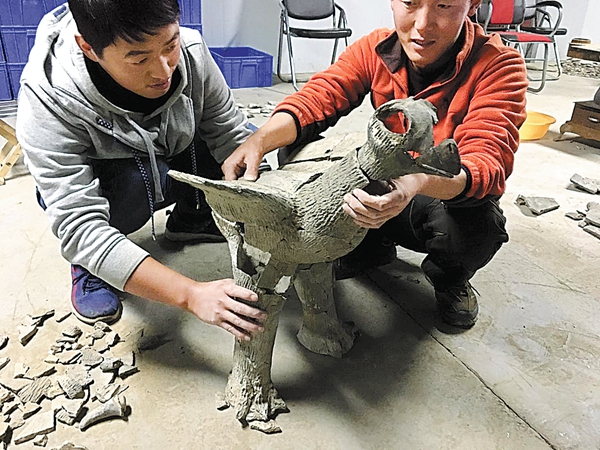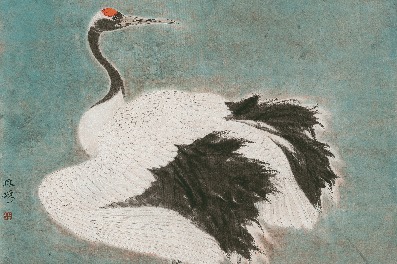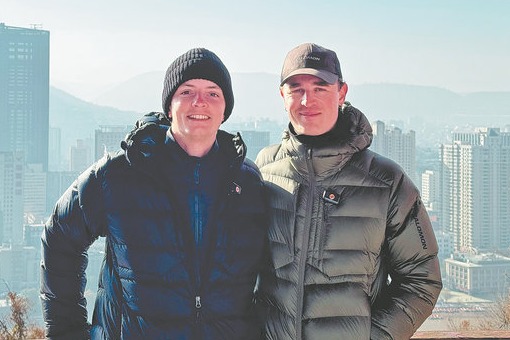What lies beneath


Its scale astounds all. The total length of the Shimao stone walls, at least 2.5 meters wide, exceeds 10 kilometers. The highest surviving section is 5 meters above the ground.
"To construct these walls, the human labor was much more than the number of people living in this settlement," Sun says.
The site was first found by archaeologists in the 1950s, and preliminary research began in 1976 when precious pieces of jade were recovered. Nevertheless, it was only when Sun led his colleagues in the first formal excavation, beginning 2011, that scholars began to realize that their previous understanding of the site was only the tip of the iceberg.
"The site is so huge, but the local landscape is rugged," Sun says. "We can hardly imagine the extent of the site when standing in it, but we can see relics from the period of Longshan Culture (2500 to 2000 BC) almost on every hill."
Sun and his colleagues are lucky. In spite of erosion over millennia, the general layout of the stone city and local landscape amazingly remain intact. Continuous field research helped people to piece the puzzle together and unveil the "epoch-making" discovery.
"Based on research of unearthed artifacts and funeral customs, we can see the city was built by native people who had lived in this place for a long time," Sun says. "As time passed by and society got increasingly complicated, such a core settlement of a prototyped state was formed in Shimao."
Shimao is not alone. Through their studies, archaeologists can now gradually "rebuild" that ancient state, which was presumably from 4,300 to 3,800 years ago. About 100 smaller city ruins were also found in the nearby areas, just like satellite settlements surrounding a metropolis.
In Sun's eyes, they represent a community and society with a pyramidal structure. "Before further evidence is found, it's better to call it the center of the regional regime controlling North China around 2000 BC."
Once Shimao city was excavated, some scholars tried to connect Sun's groundbreaking findings to existing documentation, and thus usher some legendary rulers like Huangdi ("Yellow Emperor") and Yao from suspected mythology to actual history. But Sun thought it is still too early to credit Shimao to any famed rulers recorded in early Chinese history.
"You can only talk based on the material you unearth," he says. "But when combining approaches of archaeology, natural sciences and ancient documentation, we can have new views on the relations between prehistoric civilizations and ancient legends."
Nonetheless, the city per se has already reshaped people's understanding of history, on architectural development in particular. For instance, the previously known earliest physical evidence of bastions-a structure projecting outward from the city wall-were from the Han Dynasty (206 BC to AD 220), and barbicans-the outer defense perimeter of a city-were believed to first appear in China in the Tang Dynasty.
Shimao has both, a few thousand years earlier than previously believed.





































